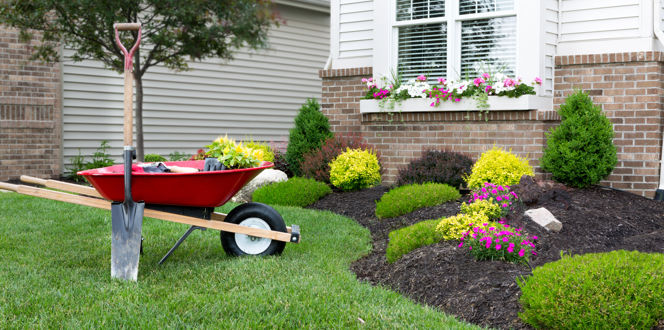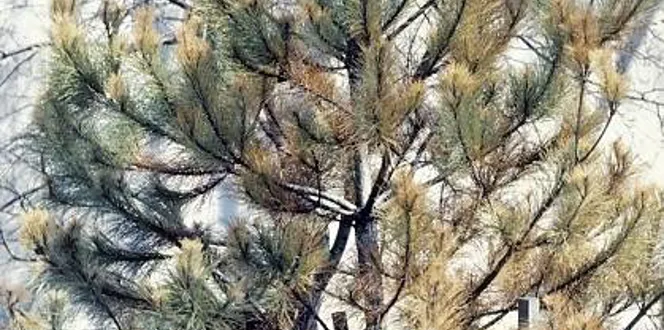So you’ve just planted a new tree in your yard. What's next?
Caring for a newly planted tree should be comprehensive, but it doesn’t have to be complicated! With the five quick tips below, you can get your new tree off to a great start.
Below, find practical advice for watering, mulching, fertilizing, pruning, and inspecting young trees.
How to Care for Newly Planted Trees
These tried and true tips are just what you need to set your new tree up for success.
1. Mulching: How to put mulch around trees correctly
Learning how to mulch a tree the right way is a numbers game. Here’s what you need to know: first, keep mulch at least 3 inches away from the trunk. What you don’t want is for mulch to be piled up against the tree as this can cause moisture to be trapped at the root crown where the tree’s trunk and root ball meet. . This can lead to wood decay, rot and eventual failure of the tree.
And lastly, spread mulch all the way out to the tree’s dripline, which is the point on the ground directly below the farthest-reaching branch. This increases the roots’ ability to absorb water and nutrients from the soil.
Second, create a mulch layer that’s about 2-to-4 inches thick.
Here are problems caused by mulch that’s too thick around trees.
2. Watering: How often to water newly planted trees
It’s no surprise that young trees need hydration. What’s not always clear is how often to water new trees.
While there’s no set amount of water that works across the board, one thing that’s true for all trees is the importance of keeping the root ball, and the soil around it, moist without being soggy. New trees should be watered right after planting, then they should receive one inch of precipitation per week over the entire root zone (or the equivalent amount of water through irrigation). If you're using a sprinkler, you can set out a small dish or similar item and turn on the sprinkler until the dish has filled with one inch of water.
What’s the best way to keep my young tree hydrated?
3. Fertilizing: How often should you fertilize trees?
The soil in our yards doesn’t always have the nutrients trees need to stay healthy. That’s where fertilizer comes in. It provides trees with the necessary minerals and nutrients that are missing from yard soil.
So, when should you fertilize new trees, and how often? When you work with Davey, you don’t have to stress over the “best time to fertilize trees.” Our Arbor Green PRO® and Arbor Green Xtra fertilizers are designed to slowly release nutrients uniformly over time no matter when they’re applied. Your local Davey arborist can help you select a tree fertilizer that meets your plant’s needs.
Learn more about Davey’s fertilization service.
4. Pruning: How to trim young trees
In a tree’s early years, it’s not uncommon for multiple branches to compete for the “leader” position, i.e, the tree’s main trunk. In the long run, this tendency can actually make trees weaker. But, by using correct pruning techniques from the start, trees will get the foundation they need to thrive for years to come.
Learn how to train young trees with pruning.
5. Monitoring: Early tree health signs to look out for on newly planted trees
Keeping a close eye on your tree while it’s young can help you dodge issues later on. You should make a habit of inspecting your new tree for red flags. Here’s what to look out for:
- Leaf color: Yellow leaves, or brown leaves outside of the fall season. Also, look for white or black spots or coating on leaves.
- Leaf drop: Early leaf drop happening in spring or summer.
- Leaf wilt: This can be a variety of things, from leaves that look scorched or burned to curled or drooping leaves.
- Dieback of twigs and branches: Look for single branches throughout the tree that have dead or fallen leaves.
- Peeling bark: Bits of bark that are hanging off the tree or that have fallen off completely.
If your tree is showing any of these signs, ask a certified arborist to inspect the tree and discuss proper plant health care to get your tree back to tip-top shape.





